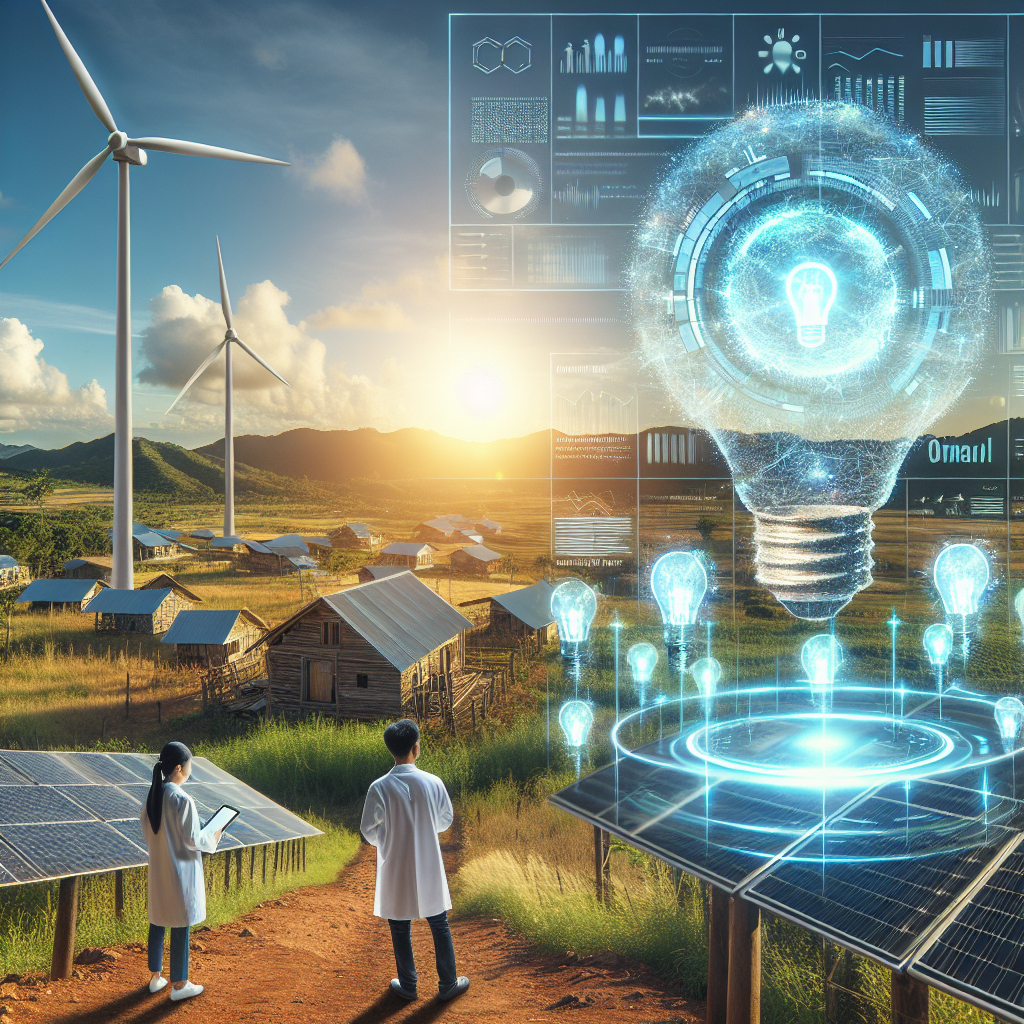Advances in artificial intelligence (AI) technology are revolutionizing the way we approach many aspects of our lives, including the way we generate and distribute energy. In remote communities that are often off the grid or have limited access to traditional energy sources, AI-powered solutions are offering new possibilities for enhancing energy access and integrating renewable energy sources.
Renewable energy sources such as solar, wind, and hydro power have the potential to provide sustainable and reliable energy to remote communities. However, the intermittent and unpredictable nature of these sources can pose challenges for energy distribution and storage. This is where AI comes in, offering solutions to optimize energy production, distribution, and consumption in remote areas.
One of the key ways AI is being used to enhance energy access in remote communities is through the development of smart grids. Smart grids use AI algorithms to analyze data from renewable energy sources, energy storage systems, and energy consumption patterns to optimize energy flow and distribution. By predicting energy demand and adjusting energy production and distribution accordingly, smart grids can ensure a stable and reliable energy supply in remote areas.
AI can also be used to optimize the performance of renewable energy systems. For example, AI algorithms can analyze weather patterns and solar radiation data to predict when solar panels will generate the most energy, allowing for more efficient energy production. AI can also be used to optimize the operation of wind turbines by adjusting rotor blades to capture the maximum amount of wind energy.
In addition to optimizing energy production and distribution, AI-powered solutions can also enhance energy efficiency in remote communities. Smart meters and sensors can be used to monitor energy consumption in real-time, allowing residents to track their energy usage and make adjustments to reduce energy waste. AI algorithms can also analyze energy consumption patterns to identify opportunities for energy savings and recommend energy-efficient practices.
Furthermore, AI-powered solutions can enable remote communities to integrate energy storage systems, such as batteries, to store excess energy generated by renewable sources. By optimizing the charging and discharging of energy storage systems, AI can help remote communities maximize the use of renewable energy sources and reduce their reliance on traditional energy sources.
Overall, AI-powered solutions are offering new possibilities for enhancing energy access in remote communities with renewables. By optimizing energy production, distribution, and consumption, AI can help remote communities achieve a sustainable and reliable energy supply that is not only environmentally friendly but also cost-effective in the long run.
FAQs:
Q: How can AI help remote communities integrate renewable energy sources?
A: AI can help remote communities optimize energy production from renewable sources such as solar and wind by analyzing weather patterns and energy consumption data to predict energy generation and demand.
Q: Can AI help remote communities reduce energy waste?
A: Yes, AI-powered solutions such as smart meters and sensors can monitor energy consumption in real-time and identify opportunities for energy savings, helping remote communities reduce energy waste.
Q: Are AI-powered solutions cost-effective for remote communities?
A: While the initial investment in AI-powered solutions may be higher, the long-term benefits of optimizing energy production and consumption can lead to cost savings for remote communities in the form of reduced energy bills and increased energy efficiency.
Q: How can AI help remote communities improve energy storage?
A: AI algorithms can optimize the charging and discharging of energy storage systems, such as batteries, to store excess energy generated by renewable sources and ensure a stable and reliable energy supply in remote areas.

